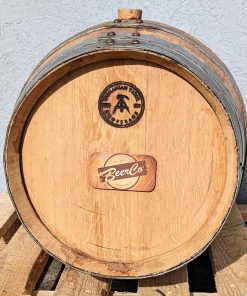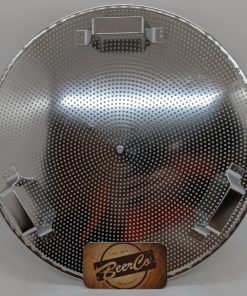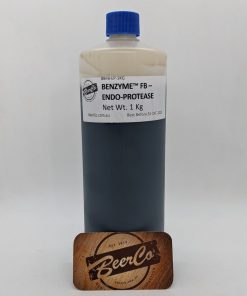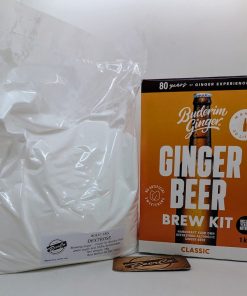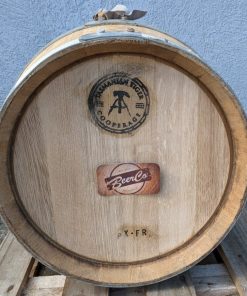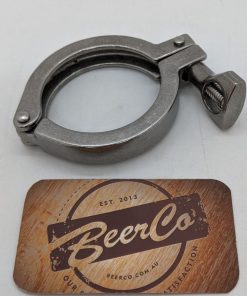American Oak Chips | Untoasted Winequip
$ 2,95 $ 1,77
The use of oak and other woods in flavouring beer has enjoyed a resurgence among home brewers and craft brewers alike be that for use in Oak Aged Barleywine, Imperial Stout, Brown Ales your favourite big bold clean beers or as a means to impart character depth and dimension to sour beer styles. Oak is most strongly associated with English and some Scotch ales such as Old Ales, Stouts, Porters, Browns, IPAs and some Bitters. Some brewers have used oak in Belgian styles such as the darker Belgian Ales, Farmhouse Ale, or Saison. More rarely you will see oak used with darker central European beers such as Bock or Schwarzbier. In general oak flavouring is associated with darker, older beers or beers replicating historic brewing techniques.
Form:
- Chips
Toast:
- Untoasted
Type:
- American
Pack Sizes:
- 100 gm net weight
- 1 Kg Net Weight (SAVE 46% OFF 100g Price)
- 10 Kg Net Weight (SAVE 28% OFF 1 Kg Price)
Usage Guidance:
20-40 grams per 10 Litres of wine or beer or must.
Types of Oak
There are many types of oak though the three most popular are American, Hungarian and French. French oak provides the mildest flavor including some sweet vanilla hints, while American oak gives the strongest oak flavor. Hungarian oak provides a middle ground. The flavor of oak also can be changed by toasting your oak. The dark toasted oak has a more carbonised or caramelised flavor while lightly toasted or untoasted oak has a much more mild flavor. Toasting is usually graded on a light-medium-heavy scale and you can purchase wood chips toasted at these different levels.
Oak Chips
These are the most popular form used in home brewing – typically the chips are sold in a bag and look like wood shavings. The small chips have a large surface area which delivers the oak flavor to the beer quickly. The only disadvantage is that the small chips can be hard to separate from the finished beer, so it is important to have them in a grain or hop bag so they can be easily removed after ageing.
Oak Flavouring Methods
Three major methods are available to home brewers:
Oak Aging
The simplest method – which involves adding the oak chips/spirals/cubes after fermentation while ageing the beer. Also this is the method used with barrels, since you store the beer in the oak barrel. We recommend sanitising the chips/spirals/cubes first by steaming them for 15 minutes to reduce the risk of infection (do not use sanitising solution as it is absorbed by the chips). Most home brewers add their oak shortly after fermentation completes and before bottling (i.e. in the secondary) and leave the oak in there until they achieve the desired taste – sampling every day or two. Some brewers with keg systems also add the oak chips/cubes in the keg itself – containing it in a bag so it will not block the keg dip tube. Oak ageing can take anywhere from a few days to several months depending on the oak used and desired flavor level.
Oak Tea
You can boil the oak to make an oak tea. Simply drop your chips/spirals/cubes in enough water to cover them fully and bring it to a boil for 10-15 minutes. Once the tea is complete you can add it a bit at a time to the finished beer until you achieve the overall beer flavor you desire. Making a tea is much faster than ageing with oak, and also lets you more closely control the flavor.
Liquor Tea
If you are looking to add bourbon, whiskey or your favourite liquor flavor to the beer you can make a tea using liquor instead. In this case you add the chips/cubes/spirals to a small amount of your favourite liquor (possibly diluted a bit with water) and let it sit for a week. Then mix the liquor in with you beer in small amounts until you achieve the desired overall flavor. Obviously moderation is important here as the liquor can easily overpower the flavor of the beer or wood chips.
Sources, References and Bibliography:
Oak in Your Beer – Oak Chips and Barrel Aging by BRAD SMITH on FEBRUARY 20, 2012
How can you imitate barrel aging homebrew with oak chips? Brew Your Own,
| Size | 100g, 1Kg, 10Kg |
|---|
Fast Shipping with Professional Packaging
We provide a variety of shipping options thanks to our long-standing relationships with UPS, FedEx and DHL. Our warehouse personnel are well trained and will be able to pack your goods in accordance with the exact and precise specifications. Before shipping, all goods are carefully examined and secured. We deliver to thousands of clients each day across multiple countries. The fact that we're dedicated to becoming the largest online retailer in the world is obvious. Warehouses and distribution centers can be found in Europe as well as the USA.
Orders that contain more than one item are assigned processing times according to each item.
We will inspect each and every one of the items ordered before shipping. The majority of orders are shipped within 48-hours. Delivery is expected to take between 3 and seven days.
Returns
We do not manage the stock in our warehouse or factory. The levels of stock can change at any time. Please be aware that it's possible for your order to be out of stock after you have placed the order.
The policy is 30 days. If it's been longer than 30 days since you bought the item We're sorry to say that we can't offer you a full refund or exchange.
The item cannot be used, and it must be in its original condition. It must also still be in the original package.
Related products
Equipment
Brewing Aids
Equipment
Brewing Aids
Brewing Aids
Equipment
Homebrewing & Winemaking Kits
Buderim Ginger | Ginger Beer Brew Kit + Dextrose Combo BeerCo.au
Equipment
Brewing Aids
Equipment
Equipment





















